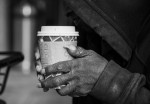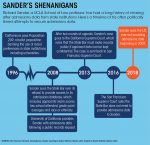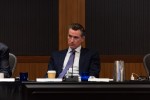UCLA experts said Gov.-elect Gavin Newsom, a Democrat, may spend more on higher education, allowing for an increase in state funding to public universities.
Newsom was elected governor of California during the midterm elections in November and will replace Gov. Jerry Brown, a Democrat, on Jan. 7. Brown has been California governor for 16 years in total, with his most recent tenure beginning in 2011.
As lieutenant governor, Newsom has focused on ensuring affordable, accessible and high-quality public higher education, as well as preventing tuition increases, according to a statement on the lieutenant governor’s official website.
The governor-elect voted against every tuition increase during his time as lieutenant governor. He also pledged to focus on a cradle-to-career plan, which would increase support for education across the board, as he campaigned for governor.
Jim Newton, a public policy and communication lecturer, said he thinks Newsom will likely come to the governorship with a desire to ease students’ financial burden and to possibly spend more on the University of California system.
Newton added he thinks Newsom is not significantly different from his predecessor, as both are progressive Democrats. However, he said Newsom is more of a traditional progressive Democrat than Brown, which could influence his spending priorities.
“Brown is famously and correctly perceived as very conservative on fiscal issues,” Newton said. “He’s cheap, … a real budget balancer. I think Newsom (is) probably less so.”
Newsom may face increased pressure from his left-leaning supporters to spend more money than Brown did, Newton said.
“I think it will be hard for him to resist that,” Newton said. “I think it will be a challenge for him, not an insurmountable challenge, but a challenge in a way that he’s different than Brown.”
Zev Yaroslavsky, director of the Los Angeles Initiative at the UCLA Luskin School of Public Affairs, said he thinks Brown has developed an ability to make fiscally responsible decisions due to his extensive experience.
“Brown has a very simple philosophy when it comes to budgeting,” Yaroslavsky said. “Don’t undertake expenditures in the good years that you can’t sustain in the lean years.”
Yaroslavsky added that elected officials are often tempted to spend money under the assumption that good economic conditions will continue indefinitely. However, given that they do not, it is necessary to prepare for the periodic financial downturns that are likely to affect the economy.
Newton said Newsom will likely face an economic downturn during his time as governor, which could impact spending.
“(Economic downturns) just happen periodically,” Newton said. “The nature of history is such that it’s rare to go more than five or six years without a downturn, and we’ve gone on eight, so the likelihood that there will be a downturn is very high for the next governor.”
These downturns are especially concerning for higher education because the state is known to cut funding from universities first when budgeting, Yaroslavsky said.
“The UC is always the battering ram for budget cuts,” Yaroslavsky said. “One of the first things to get hit, even in the good years, has been the University of California.”
Legislators should care more about the UC, Yaroslavsky said, because it is the economic engine of California. He added the UC provides the necessary training for young adults entering the labor force.
Edward Greg Huang, student adviser to the Board of Regents, said he thinks higher education is particularly underappreciated in the U.S.
“I think that higher education is something that people (politicians) are willing to ignore or neglect in times of trouble and I would like to see a shift in perspective there,” Huang said.
Huang added he hopes Newsom can make improvements in this area by being more vocal about support for higher education and its importance to California’s economy, social mobility and people.
Student Regent Devon Graves said he thinks Newsom has already shown his commitment to advocating for higher education during his time as lieutenant governor, adding he has attended numerous Regents meetings and has opposed tuition raises.
“He’s someone that understands the student experience and I think will be a strong advocate for the University,” Graves said.
He also said he hopes the governor’s budget proposal in January will include more financial support for education, from pre-K to higher education. Graves added he believes this would send a strong message to the state and the University that education is going to be a priority for Newsom.
Huang said increased state funding could finance additional housing projects, prevent tuition increases and finance food pantries and food insecurity support for students. He added it could also provide increased mental health services to students, increase the number of faculty and help maintain facilities.
“Increased state support helps alleviate pressure from all parts of the University, and its effects are very wide reaching and I think its importance cannot be understated,” he said.
The University currently faces concerns over food and housing insecurity, deferred maintenance and the increase of the student-to-faculty ratio resulting from decreased funding per student.
If Newsom demonstrates strong support for the Regents’ proposed budget, conversations between the UC and Newsom could focus less on tuition and more on advocacy in other areas, Graves said.
Huang said he thinks Newsom is aware of other issues facing students in the UC, such as food and housing insecurity, and that he understands that student issues do not solely revolve around tuition. He added that he hopes this will be reflected in the state budget.
Other than getting some relief from tuition costs, Newton said he does not expect students’ experiences in higher education to change drastically, but also warned about the future state of the economy.
“People should also be mindful that at some point the downturn is inevitable and at that point he may have to ask more from students,” Newton said.






